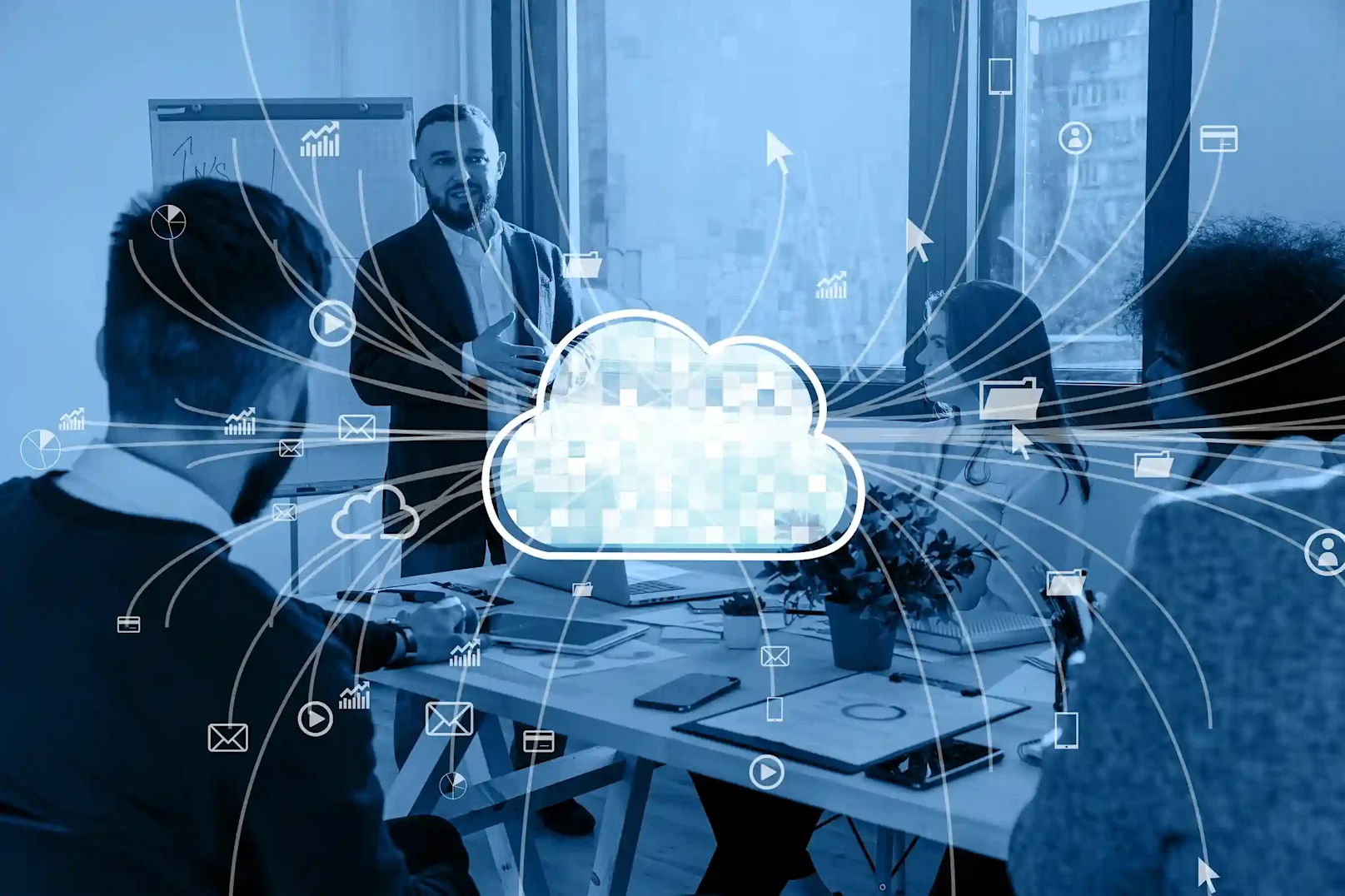
10 Reasons Cloud HR Software is a Must for Small Businesses in 2025
Introduction
Handling HR and payroll manually, or with outdated software, can significantly hinder a small company's operations. By 2025, that job is best left to cloud-based tools, a move that has gone from optional trend to smart strategy. These systems handle payroll, vacation tracking, rule updates, and even provide staff with self-service portals, changing the game for small and medium-sized businesses everywhere.
If you are still on the fence about upgrading, here are ten clear reasons cloud HR software is essential for small firms in 2025.
1. Cost-Effective and Scalable
Cloud HR software gives small businesses a wallet-friendly option for managing people. Unlike older setups that demanded pricey servers, an IT crew, and endless upkeep, a cloud platform charges in simple pay-as-you-go chunks. You pay only for the tools and headcount you use, and you can add capacity when your team expands. Because there are no machines to install and no downloads to babysit, all updates and security fixes run online. This slice of monthly cost trims overall spending while speeding up day-to-day operations. Plus, the system automates payroll, attendance, and leave logs, letting HR swap paperwork for bigger growth projects.
2. Anytime, Anywhere Access
One of the biggest upsides of cloud HR software is how easy it is to get to. HR teams, managers, and staff can log in from just about anywhere-office desk, living room, or train station-on any device that has the internet. That mobility matters a lot for remote workers, field crews, and companies spread over several sites. Because everyone sees the same live data, updates appear in real time, and decisions don't sit on some forgotten desk. Whether it is checking attendance, giving leave a thumbs-up, or running payroll, the task can be wrapped up in a few taps while still on the move. Very quickly, you notice less hunting for paper, fewer bottlenecks at the entrance, and HR routines humming along around the clock.
3. Streamlined Payroll Processing
Cloud-based HR tools take the headache out of payroll by handling calculations, deductions, tax filings, and direct deposits all in one workflow, so you spend far less time on data entry and correct-to-error. Because they pull attendance and leave records in real time, salaries are confirmed quickly and with fewer compliance risks, which in turn builds employee confidence and trust in the system. Most services then push out payslips and statutory reports with a single click, adding a layer of transparency that smlr-business owners genuinely appreciate. For SMEs, the effect is clear: less money paid to outside experts and far more authority over whappens inside their own operation. Finally, user-friendly dashboards and timely alerts turn payroll into a task almost anyone can handle, making prond clear remembers to pay staff on schedule, every single time.
4. Automated Compliance Updates
When you're a small business owner, keeping up with complex regulations around labor laws, tax protocols, and required reporting can feel overwhelming. Affordable HR and payroll software will simplify your life by delivering automatic updates for compliance issues directly to your dashboard. Each software release makes the newest government requirements automatic; it doesn't matter if they are about PF, ESI, TDS, minimum wages, or any of the new labor codes, your payroll will be legal. As a result, you don't have to waste your time searching through websites or paying for advice every time something shifts. You will also have an alert system with the software and make real-time error edits to avoid penalties or future costly disputes. For SMEs, this means painless payroll, time savings, and the freedom to focus on what they do best.
5. Enhanced Data Security
Cloud-based HR payroll software has incorporated some additional data security features to ensure sensitive employee data (salary, bank details, tax records) is all protected. Cloud service providers have ample resources to build redundant data security measures that are very difficult for spreadsheets or in-house systems to replicate. Your typical cloud service provides server encryption, secure login and authentication controls, role-based access permissions, and multi-factor authentication (MFA) to prevent unauthorized access. This capability is combined with regular data back-ups, industry-compliant disaster recovery options, and ICAN auditable processes that often exceed industry standards (eg, compliance to GDPR or ISO certifications). All these attributes work together to ensure your HR data is safe, even if your company’s system has failed. For SME businesses with limited in-house IT specialists, there are remarkably few alternatives that provide such protection. Cloud HR payroll systems commit to enterprise-grade data security at an affordable price, while simultaneously ensuring business capabilities are maintained and employees can trust their employers to protect all processing of their data.
6. Improved Employee Experience
Cloud HR payroll software significantly enhances the employee experience by granting access to self-service portals, mobile access, and real-time access to pay slips, tax files, and leave balances. Employees will no longer need to enter the HR office to chase up simple information - they can update their personal data, request leave, and check attendance from anywhere, at any time. This sort of transparency begets trust in their employer and minimizes administrative holdups. With automated alerts, timely pay processing, and readily accessible support, overall, employee satisfaction and participation can only increase. For small and midsize businesses (SMEs) and entrepreneurs, providing employees with such effortless access to a friendly experience not only boosts productivity dramatically, but it can also assist in recruiting and retaining good talent in what is a highly competitive job market.
7. Centralized HR Operations
Cloud-based HR payroll software centralizes all HR functions, whether payroll, attendance, leave, compliance, performance, and employee data into one cohesive platform. All data silos and disconnected spreadsheets are eliminated, and this provides HR teams with a real-time operational view and collaborative file and data sharing. This improves coordination between different departments, reporting is made easy, and allows managers to make data-driven decisions rapidly. Since everything is accessible from one platform ensures improved data accuracy, compliance, and disallowed manual errors. Keeping all HR operations centralized in one location means less disorder for SMEs, better productivity for their employees, and more time to focus on strategic direction and employee commitment initiatives.
8. Better Analytics and Insights
Cloud-based HR payroll software enable businesses to capitalize on the unique advantages of a contemporary tool, across a set of waves on their continuum with visual dashboards and report automation driving access to data. SMEs get incredible insights into number and patterns with the ability to analyze their attendance messages, payroll costs, employee churn and turnover rates, and compare performance metrics alongside other strategic objectives. These insights help organizations see the forest instead of getting lost while managing trees by allowing organizations be proactive toward workforce capital planning and supply chain utilization. Cloud-based HR software assists organizations using an agile framework instead of bureaucratic processes to manage labor supply and single-source capital planning proactively, providing organizations better working organizational analytics instead of examples as precedents. Organizations will increase their contribution to workforce productivity and employee productivity. That is, as disruptive change accelerates towards knowledge-based industries, cloud analytics and reporting capabilities prepare organizations to lead a competitive advantage for workforces today and in the future.
9. Faster Onboarding & Offboarding
Cloud HR solutions provide a seamless employee lifecycle - from onboarding to offboarding - that is fast, streamlined, and organized. New employees can fill in paperwork, view policies, and gain system access electronically without relying on manual paperwork and delays. Employees going through the offboarding process allow for quicker clearance, full & final settlement tracking, and record-keeping. This benefit ensures compliance by tracking and minimizing errors while improving the employee experience and formality through their transition. For SMEs (Small to Medium Enterprises), an employee onboarding process that is happening faster means productivity is realized sooner, while an organized offboarding process provides a unique opportunity for professionalism and increase legal contingencies. If an organization has automated this type of function, the HR team now has an opportunity to put more focus on the employee and less on the process.
10. Future-Proof Your Business
Cloud HR payroll solutions provide SMEs with the tools and versatility to stay competitive in a fast-changing work environment. Compliance laws are changing, hybrid work models are not going away, and technology continues to improve, hence, your cloud technology solution makes it simple to deploy upgrades without costly IT exercises. Analytics enhanced by artificial intelligence, complete remote access, interoperability with leading-edge tools, and constant innovation to support your workflows means that you will always be set for what is next. Most importantly, cloud HR payroll software makes your business more versatile, scalable, and adaptable - a company that can pivot to stay relevant as the industry continues to innovate and evolve. It isn't just about getting what you need today, but establishing a strong foundation that is ready for the future and that will also grow with your organization.
Conclusion: It's Time to Go Cloud
In today’s competitive landscape, cloud HR software isn't just a tool—it's a growth enabler. For small businesses looking to boost productivity, reduce costs, and build a stronger workforce, switching to a cloud-based HR and payroll solution in 2025 is a no-brainer.




